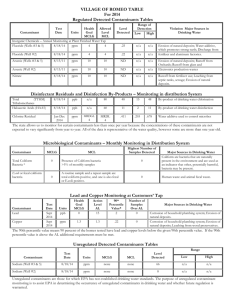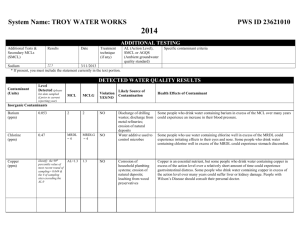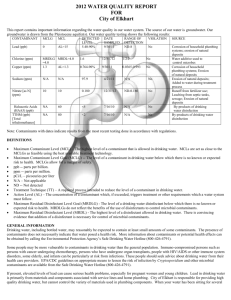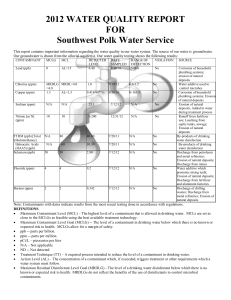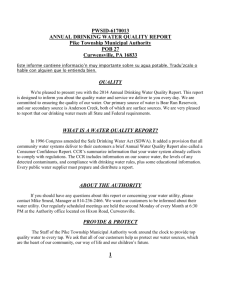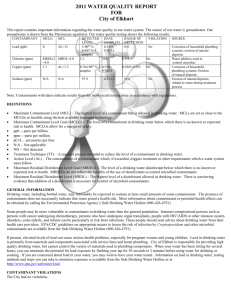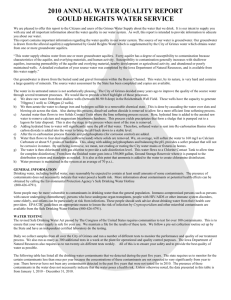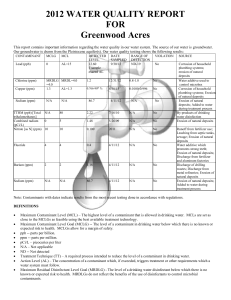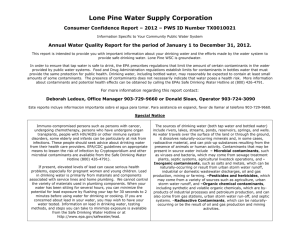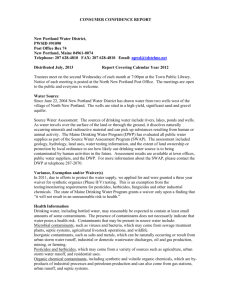Water Quality Data Table
advertisement
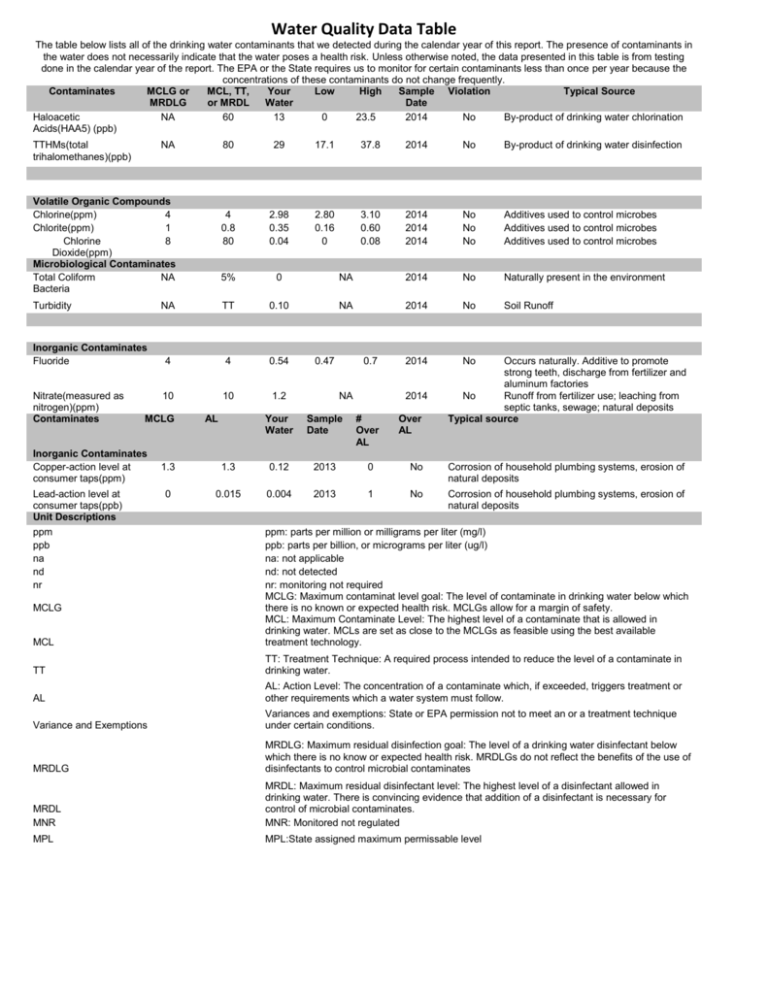
Water Quality Data Table The table below lists all of the drinking water contaminants that we detected during the calendar year of this report. The presence of contaminants in the water does not necessarily indicate that the water poses a health risk. Unless otherwise noted, the data presented in this table is from testing done in the calendar year of the report. The EPA or the State requires us to monitor for certain contaminants less than once per year because the concentrations of these contaminants do not change frequently. Contaminates MCLG or MCL, TT, Your Low High Sample Violation Typical Source MRDLG or MRDL Water Date Haloacetic NA 60 13 0 23.5 2014 No By-product of drinking water chlorination Acids(HAA5) (ppb) TTHMs(total trihalomethanes)(ppb) NA 80 29 17.1 37.8 2014 No By-product of drinking water disinfection 4 0.8 80 2.98 0.35 0.04 2.80 0.16 0 3.10 0.60 0.08 2014 2014 2014 No No No Additives used to control microbes Additives used to control microbes Additives used to control microbes 5% 0 NA 2014 No Naturally present in the environment NA TT 0.10 NA 2014 No Soil Runoff 4 4 0.54 2014 No 10 10 1.2 Volatile Organic Compounds Chlorine(ppm) 4 Chlorite(ppm) 1 Chlorine 8 Dioxide(ppm) Microbiological Contaminates Total Coliform NA Bacteria Turbidity Inorganic Contaminates Fluoride Nitrate(measured as nitrogen)(ppm) Contaminates MCLG Inorganic Contaminates Copper-action level at consumer taps(ppm) Lead-action level at consumer taps(ppb) Unit Descriptions ppm ppb na nd nr AL 0.47 0.7 NA Your Water Sample Date 2014 # Over AL Over AL Occurs naturally. Additive to promote strong teeth, discharge from fertilizer and aluminum factories No Runoff from fertilizer use; leaching from septic tanks, sewage; natural deposits Typical source 1.3 1.3 0.12 2013 0 No Corrosion of household plumbing systems, erosion of natural deposits 0 0.015 0.004 2013 1 No Corrosion of household plumbing systems, erosion of natural deposits MCL ppm: parts per million or milligrams per liter (mg/l) ppb: parts per billion, or micrograms per liter (ug/l) na: not applicable nd: not detected nr: monitoring not required MCLG: Maximum contaminat level goal: The level of contaminate in drinking water below which there is no known or expected health risk. MCLGs allow for a margin of safety. MCL: Maximum Contaminate Level: The highest level of a contaminate that is allowed in drinking water. MCLs are set as close to the MCLGs as feasible using the best available treatment technology. TT TT: Treatment Technique: A required process intended to reduce the level of a contaminate in drinking water. AL AL: Action Level: The concentration of a contaminate which, if exceeded, triggers treatment or other requirements which a water system must follow. Variance and Exemptions Variances and exemptions: State or EPA permission not to meet an or a treatment technique under certain conditions. MRDLG MRDLG: Maximum residual disinfection goal: The level of a drinking water disinfectant below which there is no know or expected health risk. MRDLGs do not reflect the benefits of the use of disinfectants to control microbial contaminates MRDL MNR MRDL: Maximum residual disinfectant level: The highest level of a disinfectant allowed in drinking water. There is convincing evidence that addition of a disinfectant is necessary for control of microbial contaminates. MNR: Monitored not regulated MPL MPL:State assigned maximum permissable level MCLG
